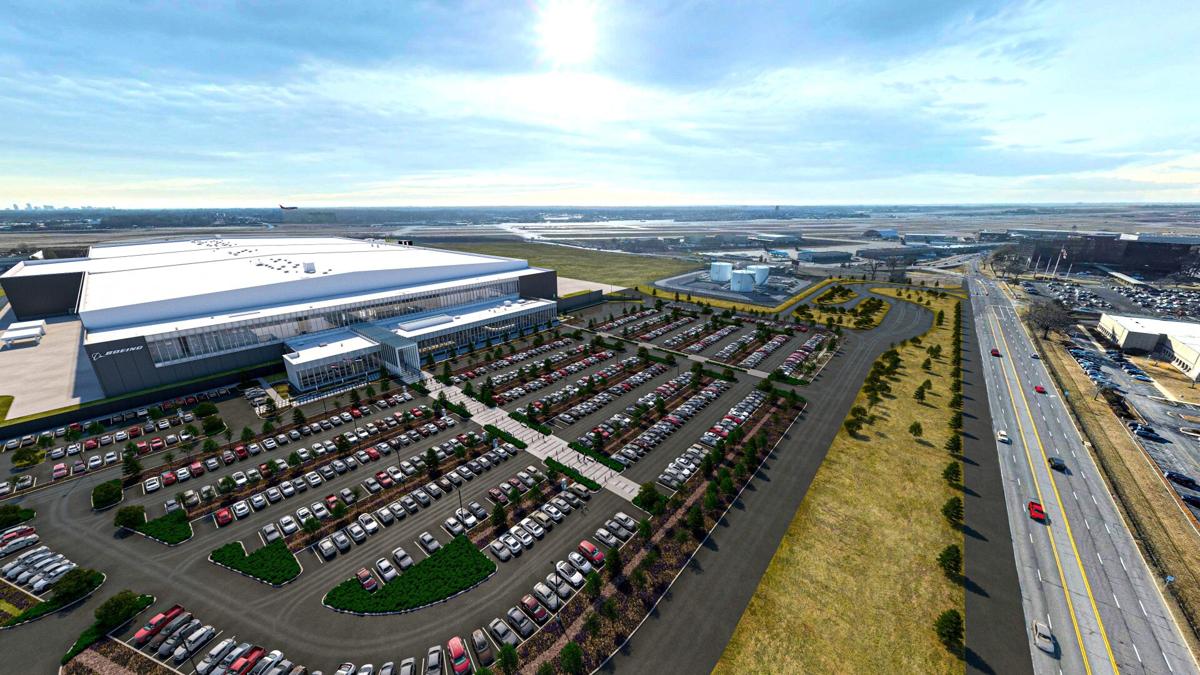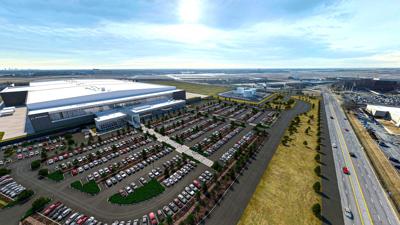This story was updated at 4:12 p.m. with comment from Boeing and industry analysts:
BERKELEY — Boeing officials confirmed this week that they are building a manufacturing site for combat aircraft, part of the company’s $1.8 billion expansion project at its north St. Louis County complex. But recent comments from military leaders have injected new uncertainty into an Air Force program the company is reportedly pursuing.
Steve Nordlund, senior site executive for Boeing St. Louis, said Wednesday he couldn’t confirm or deny whether the company is competing to build the next generation of fighter jet for the Air Force, whether the expansion project is tied to that competition, or what other programs may one day occupy the site. But he stressed that he believes the U.S. defense industry needs to make moves to keep up with the rest of the world.
People are also reading…
“It’s not lost on you what’s happening with the fight around the globe, and the speed our adversaries are moving at,” Nordlund said.
Nordlund referred to a new building included in the expansion as an “advanced combat aircraft” site that would nearly double Boeing’s manufacturing footprint here.
The $1.8 billion expansion project at Boeing’s north St. Louis County complex, which includes the 1.1 million-square-foot facility, is poised to become one of the largest defense projects in the region’s history. The county council approved about $155 million in tax breaks for the project in September and the company broke ground over the winter. Boeing has said the expansion is intended for “new aerospace programs,” suggesting that the project doesn’t hinge on any one contract.
“We have to make some bets,” Nordlund said. “We’ve listened to our customer, and we’re leaning forward.”
Boeing also opened a specialized lab and testing facility here last year, and plans to open an advanced post-assembly site in the second quarter of 2025.
Since news of the expansion broke last summer, Boeing observers have speculated on whether the project is connected to the Air Force competition, known as Next Generation Air Dominance, or NGAD. The service hasn’t publicly said which defense contractors are competing, but trade publications have reported that Boeing is believed to be facing off against Lockheed Martin. The Navy has its own version of the competition, but it is on a longer timeline.
Last year the Air Force said it planned to award a contract in 2024. But earlier this month, Air Force Secretary Frank Kendall told Aviation Week that the 2026 fiscal year budget is “tough.” Kendall didn’t confirm that the service is looking at dramatically cutting funding for the competition, according to the report. , he said: “I don’t want to get ahead of myself on any of this, OK? I’m just saying we’re open-minded right now on the things we’re looking at.”
A couple of days later, Air Force Chief of Staff Gen. David Allvin was asked at an Air & Space Forces Association event if, in light of other spending needs, the agency can still “do” NGAD.
“We’re going to have to make those choices, make those decisions,” Allvin responded.
Loren Thompson, a longtime Washington-based defense analyst, said the Air Force seems to be signaling that the program is “something they’d like to have, but not something they’re going to make huge sacrifices to achieve.”
Cynthia Cook, director of the Defense-Industrial Initiatives Group at the Center for Strategic and International Studies said it does appear that Air Force officials are hinting at a possible delay.
“I don’t know what underpins that,” Cook said. “It could be budget. It could be they want to get the contractors to invest in more new tech.”
But given the secrecy of the program, even seasoned defense-industry analysts are finding it difficult to gauge the weight of Allvin and Kendall’s remarks, or how Boeing officials are interpreting them.
What is clear, said Richard Aboulafia, managing director of AeroDynamic Advisory, is that Boeing — a company weighed down by quality problems in its passenger jet business and aging fighter jet lines in its defense business — could use a game-changer.
“That game-changer has just been kicked down the road,” he said.
Boeing referred questions about the fighter jet competition to the Air Force, citing the classified nature of the program. The Air Force said in a statement that it is building its budget memo for the 2026 fiscal year, and the details will be released early next year.
On Wednesday, during a media briefing in the leadup to the Farnborough International Airshow in England, Nordlund showed reporters a view of the expansion sites from the seventh floor of the company’s offices in Berkeley.
“Don’t underestimate, this is a pretty big bet for the Boeing company,” he said, gesturing toward the site of the future manufacturing building. “If you didn’t think Boeing was committed to the defense business, there’s your answer. It’s sitting right there.”
View life in St. Louis through the Post-Dispatch photographers' lenses. Edited by Jenna Jones.










